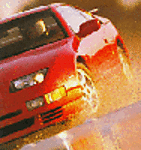It was actually the other way round, with freehand "blending" of colours at the start of the war, then, after Farnborough said there was nothing to be gained from the method, the use of mats was advocated.
Remember, this would have been at the factory, possibly at the Civil Repair Organisation, maybe certain M.U.s, but not at Squadron level.
Freehand spraying = rough overspray = drag = slowed-down aircraft, which they wanted to avoid at all cost. Keeping pilots alive was what mattered, not pretty patterns, and, mid-war, the trade of Aircraft Finisher was introduced, whose job was to keep the finish as pristine as possible. If paint needed retouching, he was supposed to sand it smooth, afterwards, then wash the airframe down with plain, clean water (possibly explains some of the "glossy" airframes in some photos.)
A few weeks ago, I received a message from a man, who told me how his (now sadly deceased) mother had worked in a London factory, producing Mosquito fuselages, and she told him that they'd used partially-tanned animal hides to produce their mats (she'd also worked in the leather industry, so knew the trade,) and had found the smell so sickening, she had to be taken off the final spraying.
He's since found a friend of his mother, who worked in the same factory, who has confirmed the awful smell, and he's promised to ask her for any further anecdotes/information.
























